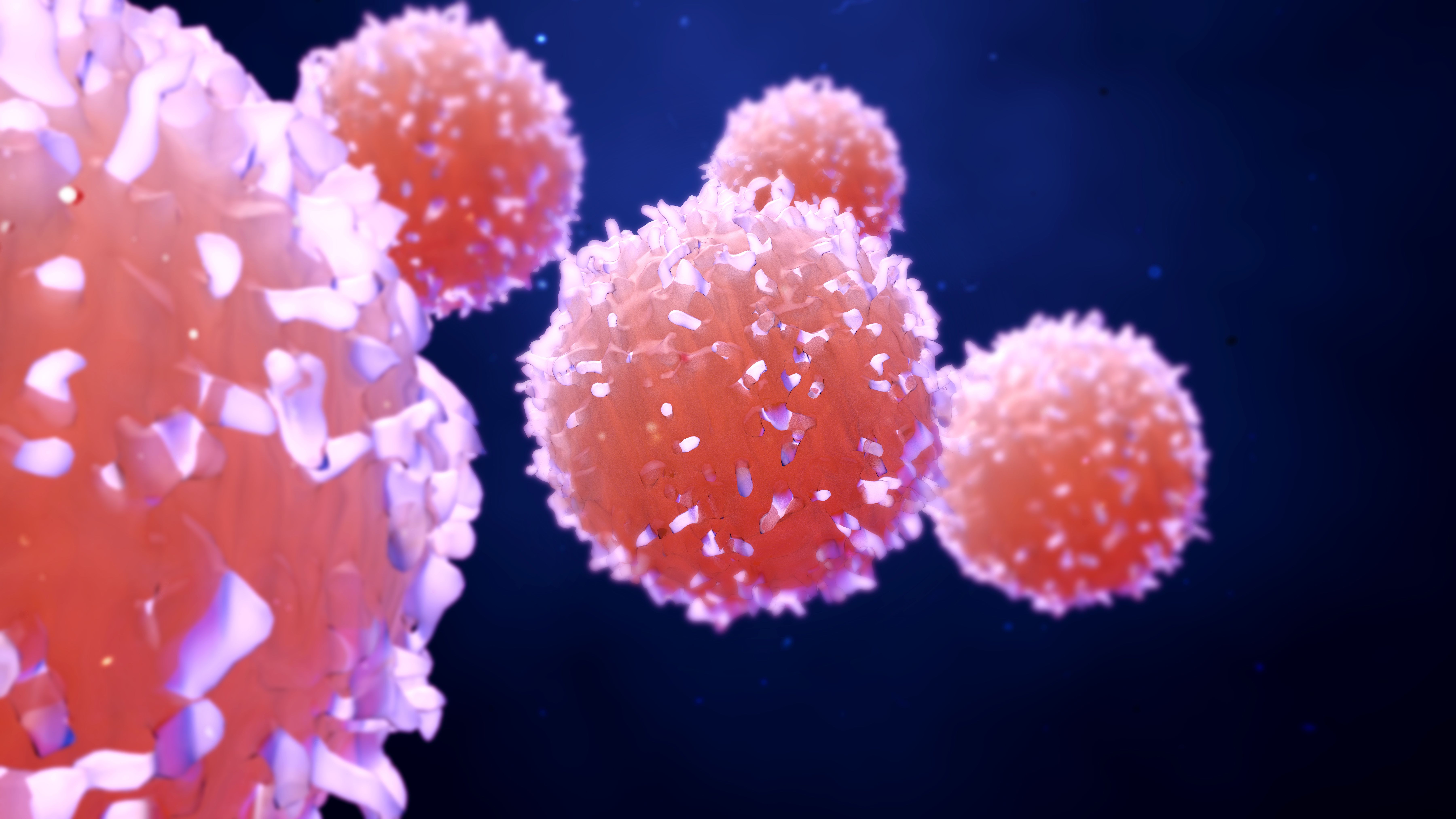Article
Tecentriq Combo Improves Response Rates in Early TNBC, Regardless of PD-L1 Status
Author(s):
Findings from a randomized phase 3 study showed that adding neoadjuvant Tecentriq to a chemotherapy regimen of Abraxane, Adriamycin and Cytoxan in patients with stage 2 or 3 triple-negative breast cancer significantly improved pathologic complete responses, compared with placebo plus chemotherapy.
Adding the immunotherapy Tecentriq (atezolizumab) to a chemotherapy regimen consisting of Abraxane (nab-paclitaxel), Adriamycin (doxorubicin) and Cytoxan (cyclophosphamide) before surgery significantly improved pathologic complete responses (pCR) in patients with stage 2 or stage 3 triple-negative breast cancer (TNBC), compared with placebo plus chemotherapy.
The data came from the phase 3 Impassion031 trial and were presented at the 2020 ESMO Virtual Congress.
Findings from the randomized, multi-center trial, which were simultaneously published in The Lancet, demonstrated that patients with early-stage disease who received the neoadjuvant, or presurgical, Tecentriq and chemotherapy regimen achieved a pCR rate of 57.6% compared with 41.1% in the group that received the placebo plus chemotherapy regimen. PCR means that there is no evidence of cancer in tissue samples following treatment.
“The combination of atezolizumab (Tecentriq) with neoadjuvant chemotherapy for stage 2-3 TNBC provides clinically meaningful pCR benefit with an acceptable safety profile independent of PD-L1 status,” said senior study author Dr. Nadia Harbeck, head of the Breast Center at the University of Munich, during a virtual presentation of the data. “Thus, this new combination therapy may offer an improved curative treatment option for this patient population with high unmet medical need.”

Previously, results from the IMpassion130 trial demonstrated that adding Tecentriq to Abraxane improved progression-free survival (PFS) and overall survival (OS) in patients with PD-L1 positive metastatic TNBC with an acceptable safety profile compared with Abraxane alone. However, as Harbeck noted during her presentation of the Impassion031 data, patients’ cancers did not need to express the protein PD-L1 in order to respond when Tecentriq was added to the treatment regimen.
Traditionally, treatments for early-stage TNBC in the neoadjuvant setting have comprised anthracycline-cyclophosphamide and taxane-based chemotherapy regimens. To compare the efficacy and safety of Abraxane followed by Adriamycin plus Cytoxan, with or without Tecentriq, Harbeck and colleagues recruited 455 patients between July 7, 2017 and September 24, 2019.
A total of 333 patients met eligibility criteria. Of the eligible patient population, 165 patients were randomly assigned to receive intravenous Tecentriq every two weeks plus Abraxane every week for 12 weeks followed by Adriamycin and Cytoxan every two weeks for eight weeks, which was then followed by surgery. The remaining patients randomly were assigned to receive placebo plus the chemotherapy regimen, which was also followed by surgery.
After a median follow-up of 20.6 months, 11 patients in the Tecentriq arm either discontinued treatment prior to surgery or did not receive treatment. Moreover, 15 patients in the placebo arm were also not evaluable for the same reasons.
A pathologic complete response was observed in 68.8% of patients with PD-L1-positive disease (77 patients) who received the Tecentriq regimen compared with a pCR of 49.3% in a total of 75 patients who were treated with the placebo-chemotherapy regimen. However, as Harbeck noted, this result was not statistically significant.
A pCR benefit was also observed with Tecentriq in the PD-L1-negative population. Of the 88 patients in the PD-L1-negative population who received the Tecentriq combination, 47.7% achieved a pCR versus 34.4% of the 93 patients who received the placebo-chemotherapy regimen.
There appears to be a positive trend for Tecentriq plus the chemotherapy regimen in improving event-free survival, disease-free survival and OS, however, Harbeck noted that the data are immature and further research is ongoing.
Almost all patients (99.4%) in the Tecentriq arm experienced at least one side effect, and 100% of the those in the placebo arm experienced at least one side effect. Treatment related grade 3 or 4 side effects were reported in 56.7% of patients who received the Tecentriq-chemotherapy regimen and 53.3% of patients who received the placebo regimen.
The most common side effects in the neoadjuvant phase in both the Tecentriq and placebo arms included, but were not limited to, hair loss (75% vs. 77.2%, respectively), nausea (64.6% vs. 67.1%, respectively) and diarrhea (41.5% vs. 44.3%, respectively).
The most common side effect of special interest of any grade was rash in both the Tecentriq arm (48.8%) and placebo arm (49.1%).
“The results of IMpassion031 showed that the combination of atezolizumab with a platinum-free neoadjuvant regimen improved pathological complete response rate,” the authors conclude in the study published in The Lancet. “This combination can also provide benefit to patients who are unfit for platinum-containing anthracycline-taxane-based neoadjuvant chemotherapy.”




